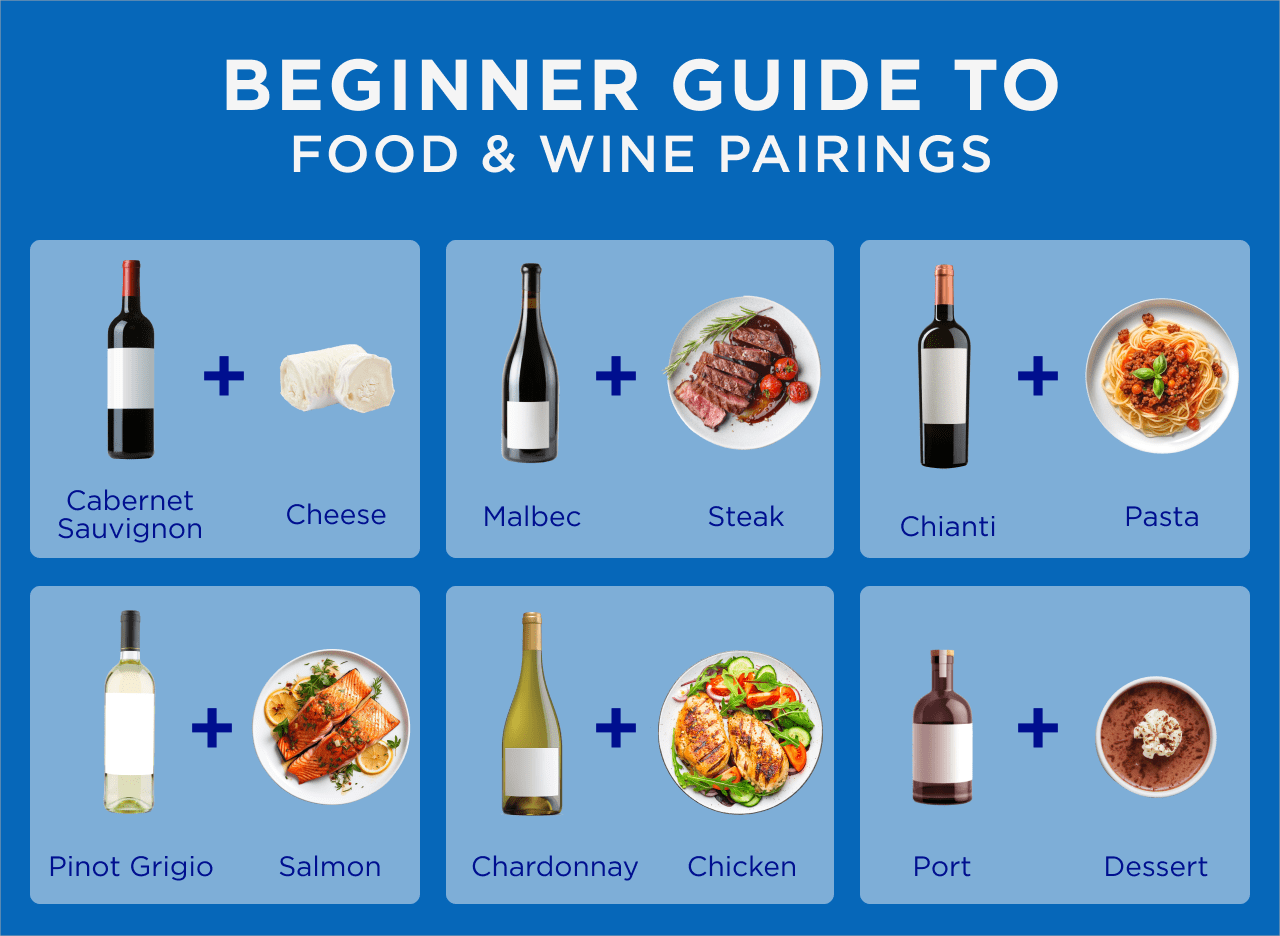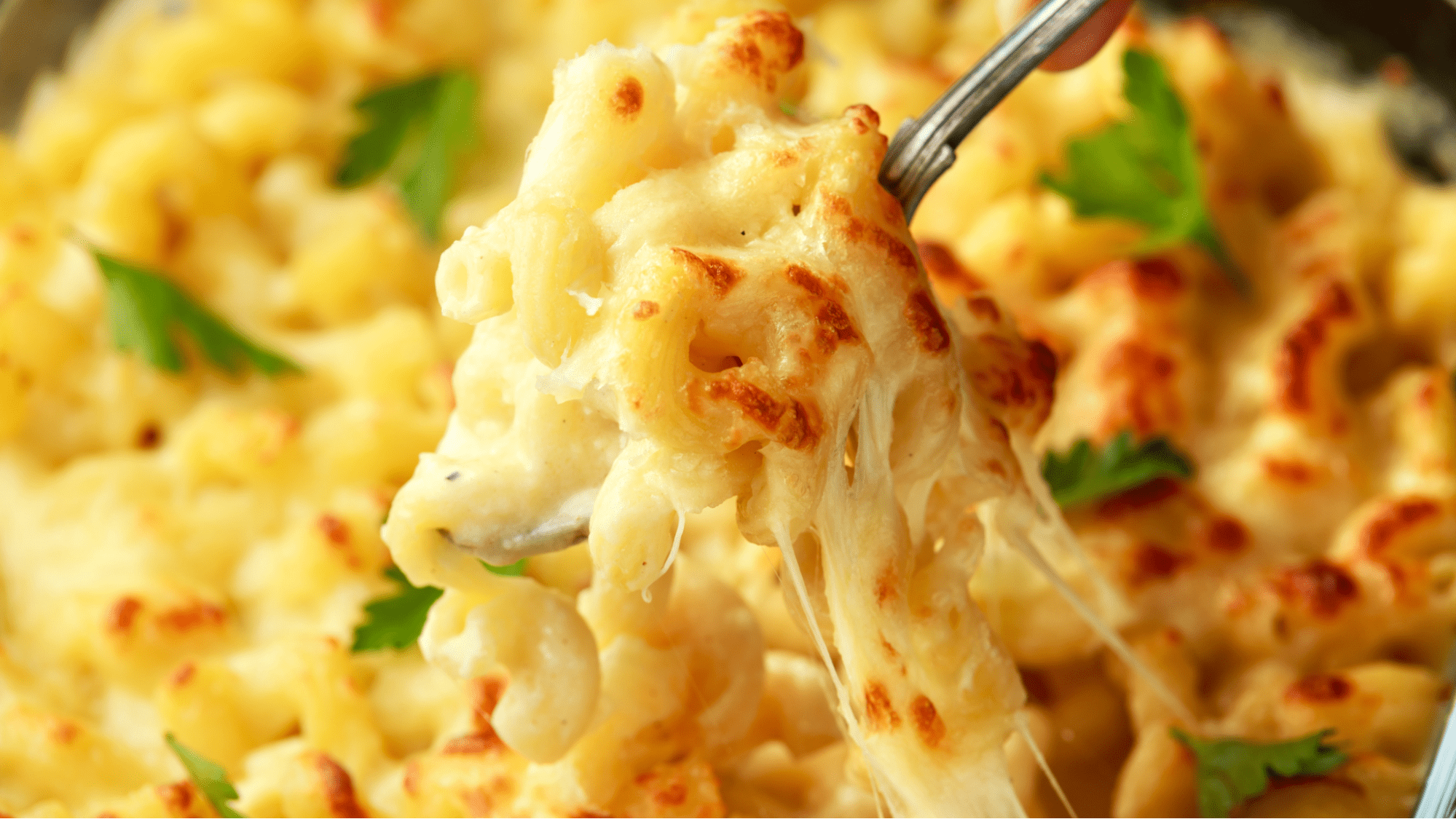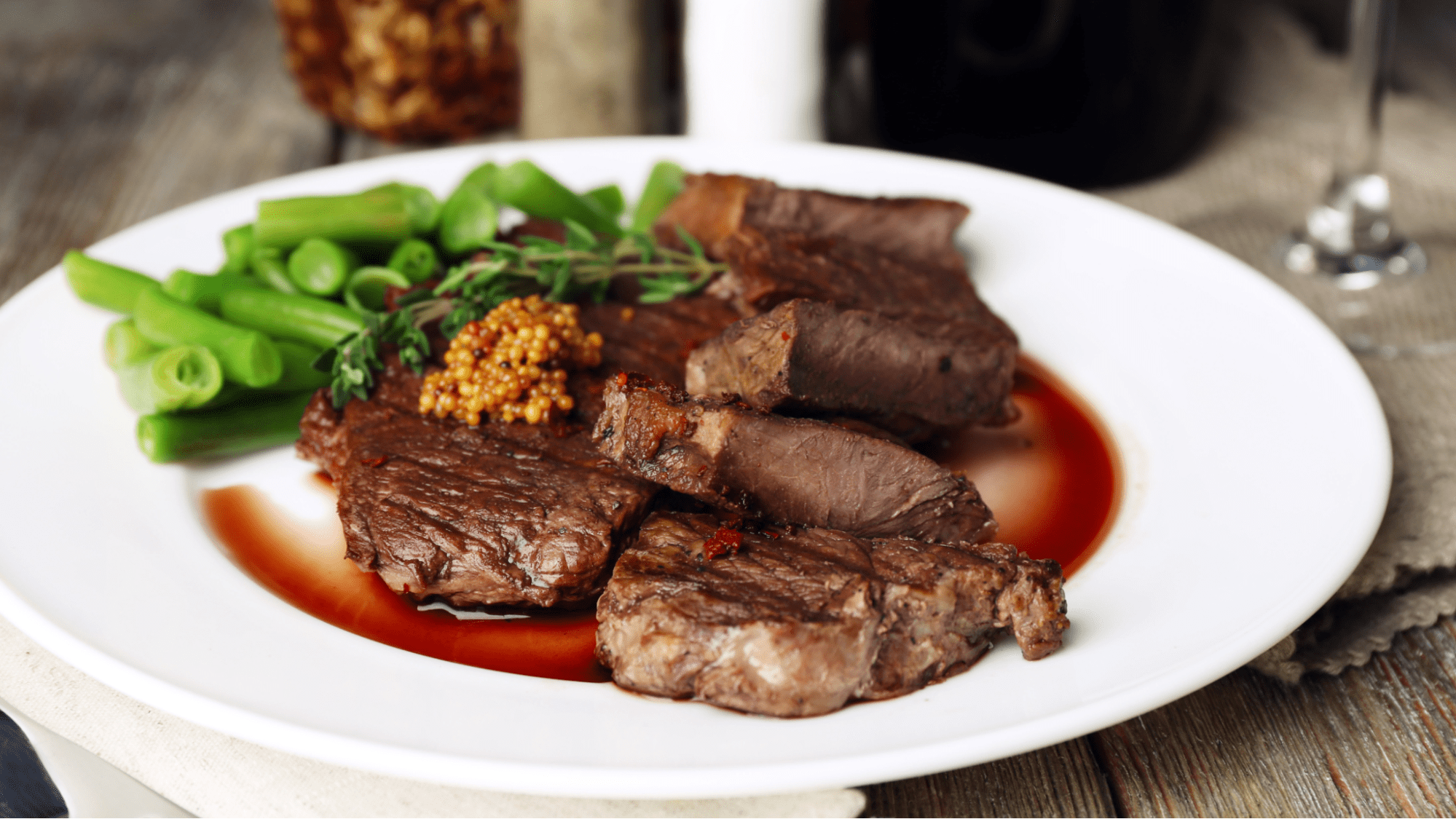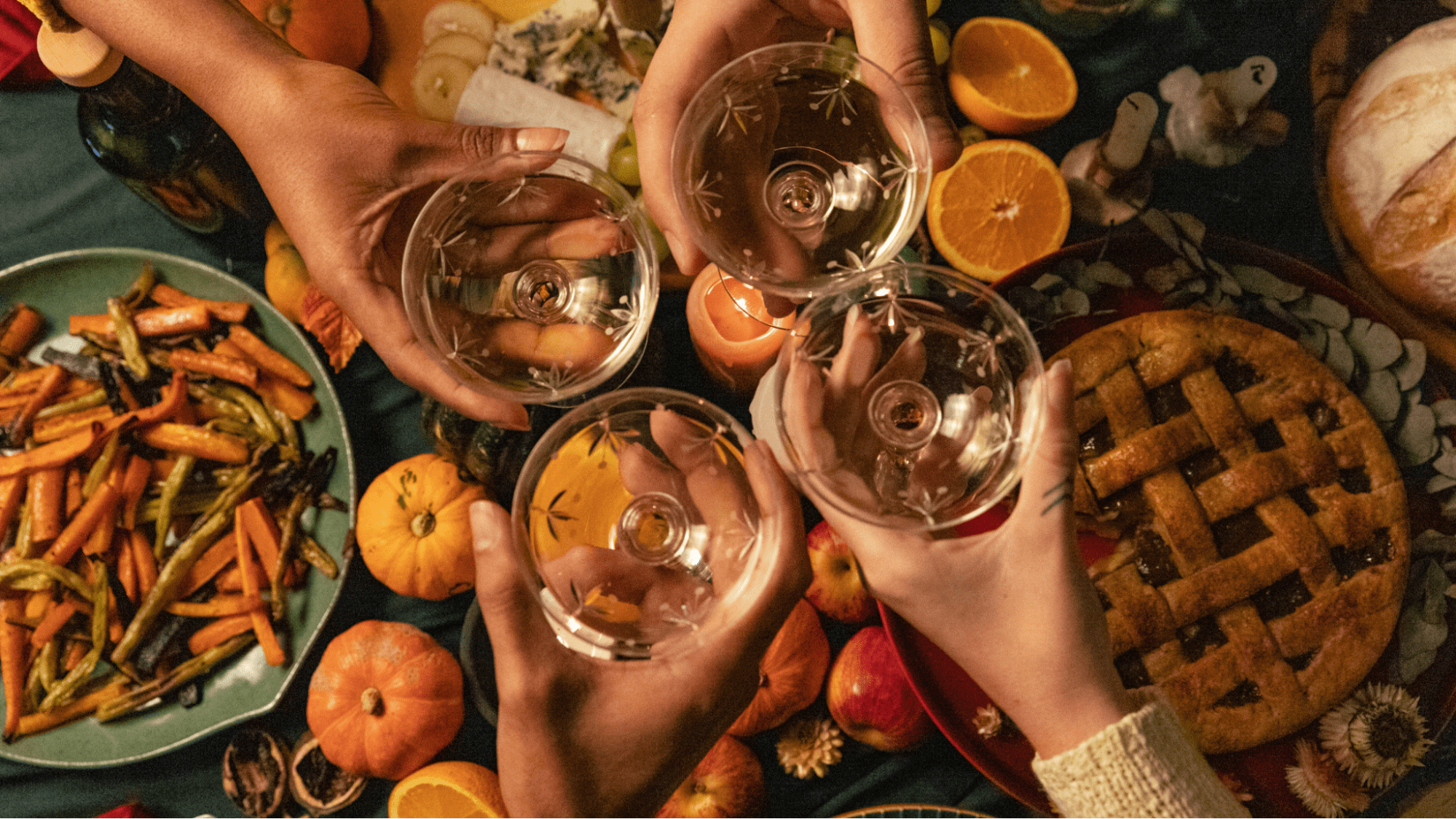Beginner Guide to Food and Wine Pairing
The possibilities are endless when venturing into the world of wine and food pairings. However, things get tricky when you don’t have the basics down.
The bold flavors of a robust red wine like Merlot or Shiraz may not complement dishes that are a better match for white wines like Chardonnay or Pinot Grigio.
Luckily, learning how to pair perfectly is much easier to grasp than you might think.

The Basics
When breaking down the basics of taste, there are six main components to focus on salt, fat, acid, bitter, and spice.
There are only three components to focus on for wine: acidity, sweetness, and bitterness.
These taste categories also happen to coincide with the three main categories of wine:
- 1. Red wines are more bitter.
- 2. White wines, sparkling wines, and Rosé are more acidic.
- 3. Sweet wines are simply sweeter.
Now that you have the basic tasting groups down, let’s find out how to match different types of wine with their ideal dish.
Match Weight and Intensity
When beginning your wine pairing journey, it’s best not to let your dish overpower your wine and vice versa.
For example, delicate white wines are usually an excellent pairing for light salads and light fish, while heavier, full-bodied red wines are better suited for hearty dishes like spaghetti and meatballs or casserole.
For a middle ground, try medium-bodied wines like Chardonnay with prawns.
The main aspect all of these examples have in common is that none of these pairing partners overpower the other.
Now, let’s kick things up a notch with contrasting and congruent pairings.
Contrasting Pairings vs. Congruent Pairings
When pairing food with wine, it’s best to find a perfect match that either directly complements (congruent pairing) or directly contrasts.
Contrasting Pairing
Examples of this category include spicy dishes like Thai curries or salty foods like ham with sweet wines like Riesling or Moscato. Along the same lines, highly acidic wines complement fatty dishes, like Sauvignon Blanc or Pinot Grigio with macaroni and cheese.

Congruent Pairing
Conversely, you could pair a wine with a dish with similar components. For example, bold red wine with steak or barbecue meat is always a decadent choice. Buttery, oaked Chardonnays are also divine with pasta dishes covered in creamy Alfredo sauce and shrimp or scallops.
You’re starting to get the hang of food and wine pairings, so let’s move onto a small wine pairing chart, including some of the most popular flavor companions.
Popular Food and Wine Pairings
To help build your confidence further, we’ve outlined six of the most common pairing choices for wine and an explanation for each.
Consider these building blocks as you venture out into more unique pairings.
-
1. Cheese
In this case, it’s wise to match your cheese's intensity with your wine's intensity. Red wines like Cabernet Sauvignon taste excellent with aged cheddar, as the potency of the cheese can handle Cabernet’s high tannins (the astringent taste) and robust character. Rosé wine is light, aromatic, and slightly acidic, making it an ideal pairing for feta cheese, while an acidic wine like Sauvignon Blanc cuts through the fat of goat cheese.
-
2. Salmon
Salmon tastes best when paired with bright red wines with hints of citrus and acidity. Salmon is light yet fatty, perfect for unoaked Chardonnay, Pinot Grigio, Sauvignon Blanc, and dry Riesling. A light, low-tannic red wine like Pinot Noir could work, but as a standard, acidic white wines provide the best contrast.
-
3. Steak
You’ve heard the saying that red wine pairs best with red meat, and the sentiment remains true. Malbec, Syrah, Pinot Noir, and Zinfandel are all prime examples of fruit-forward red wines that carry the right amount of tannins and earthy flavors to stand up to smokey, high-protein meats like barbecue ribs.

-
4. Chicken
Chicken is an interesting choice for wine pairing, as the options vary immensely depending on how the chicken is prepared. A medium-bodied Chardonnay is light enough for grilled chicken while subtly bringing out the smoky flavors from the grill. A red wine would overpower this type of chicken.
Champagne is best for fried chicken as the high acidity and bubbles cut through the fat, oil, and fried skin.
Chicken parmesan, chicken Marsala, and Coq Au Vin pair best with fruit-forward wines that bring out tomato sauce flavors, earthy qualities, and rich complexity. For these dishes, Pinot Noir, Malbec, and Merlot are ideal.
-
5. Pasta Dishes
Pasta dishes are incredibly versatile for wine pairing, as there are so many variations. An Italian red wine like Chianti or a robust red like Cabernet Sauvignon are congruent pairings for tomato-based sauces, as these wines contain herb and tomato-like notes.
For creamy pasta dishes, Chardonnay and Pinot Grigio are contrasting pairings as their acidity and brightness are opposite with heavy, fatty cream and cheese.
-
6. Sweet Foods
Dessert wines like the German Ice Wine, Gewürztraminer, Port, Moscato d’Asti, and demi-sec Champagne are not only ideal contrast pairings for spicy foods, but they are perfectly congruent with sugary foods of all kinds. Try buttery apple pie, pear tart, chocolate mousse, or peach cobbler with some of these choices for a match made in sweet heaven.

Get Creative With Food and Wine Pairing
Creating the perfect food and wine pairing goes beyond what makes sense, it’s all about what you enjoy. Use these building blocks to try combinations that inspire you.
If you’d like to enrich your wine knowledge further, check out our Podcast and Wine Online 101 for everything related to the world of wine.
As a leader in the alcohol e-commerce wine industry, we can’t wait to share our expert knowledge with you.